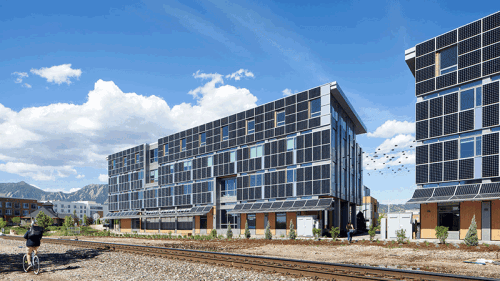The next-generation wireless telecommunications technology known as 5G, which will operate at vastly higher speeds and be able to handle many times more devices than existing 4G networks, is likely to have significant impacts on the real estate industry, a speaker said at the 2018 ULI Spring Meeting in Detroit.
Len Forkas, president of Milestone Communications, a Reston, Virginia–based developer of wireless infrastructure and cell towers, said 5G will achieve speeds of 20 gigabits per second, fast enough to download an entire Hollywood movie in a few seconds. It also will reduce latency—the measure of how long it takes a packet of data to be transmitted between two points—by a factor of 15.
In addition, 5G will require 90 percent less energy, greatly enhancing the battery life of remote devices. “This benefits devices in the field, like a device connected to a traffic light,” Forkas said. “They want a ten-year battery life for those devices.”
Eventually, 5G will enhance capabilities of the Internet of Things by enabling more of the built environment to be connected. The ability to transmit much-higher-definition video from surveillance cameras also could help make buildings and their surroundings safer, Forkas said. With 5G, “a high-definition video image will be about four times clearer than it is today,” he said.
“This network will be able to support a hundred-times increase in devices, including some that haven’t even been thought of yet,” Forkas said.
Some effects of 5G may not be seen for a while. Forkas said the International Telecommunications Union (ITU), the organization developing a uniform standard for 5G, is still working to define the standard for mobile wireless networks. The ITU released a first draft detailing the specifications last November. Once those standards are in place, telecommunications companies, which are still trying to recoup their investments in the 4G networks, will have to build new networks once again.
In the meantime, telecom firms are racing to deploy a lesser variety of the technology called “fixed 5G,” which still produces faster speeds than 4G. Forkas described fixed 5G as “a first-class seat on a 4G airplane.”
“If you hear about phone carriers pushing out 5G, that’s what they’re talking about,” Forkas said. “True 5G for your phone hasn’t been designed yet.”
With the tech evolution, real estate owners could see new opportunities to generate revenue as telecom companies seek to rent more space on rooftops and inside buildings for the additional electronic infrastructure they will need, he said.
In the shorter term, Forkas said, building owners may benefit from the telecom trend of shifting from having a few, mega-sized data centers to having greater numbers of micro-centers that are closer to the consumers of data in order to reduce latency. “Latency trumps speed,” he explained. “The longer the distance, the slower the latency.” Building owners can lease space to telecoms for such facilities.
“I think we’re going to see more data housed closer to where people are using it,” Forkas said.
Telecom companies also increasingly are looking for locations for small cells that can be attached to the exterior of buildings or concealed in streetlights.
Forkas urged building owners to make sure that their lease agreements with telecom companies spell out in precise detail the amount and type of equipment that is to be installed. Because of the rapid rate of technological change, companies may need to upgrade or increase the amount of equipment every few years, he said.
“If you have a fixed amount [of equipment] in the lease agreement, you have the opportunity to ask for more rent,” Forkas said.
Forkas said he already is seeing this trend play out with his companies’ cell towers, where telecoms are adding as much as 4,000 pounds (1,800 kg) of equipment. “It’s like hanging a pickup truck on my tower,” he joked.
But owners should not expect that telecom companies will pay for beefing up their buildings to handle the additional thousands of pounds of equipment on rooftops. Carriers do not have capital budgets for those sorts of improvements, Forkas said. Instead, “they’ll go to another building,” he said.
Over the longer term, 5G technology eventually could help facilitate the shift to autonomous vehicles, which is expected to have profound effects on land use. Forkas said driverless cars are using 4G networks, which enable cars to react to risks at about the same speed as a human driver. Eventually, 5G connectivity would enable them to communicate and react many times faster than people, giving passengers an even greater margin of safety.



